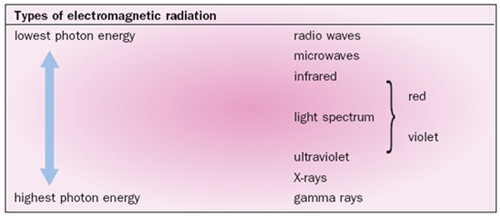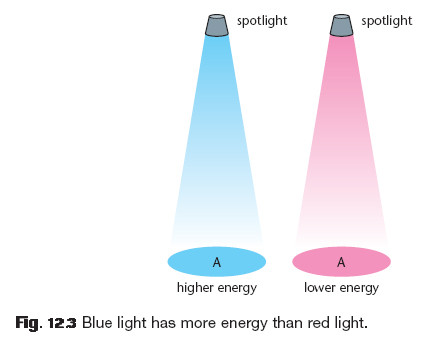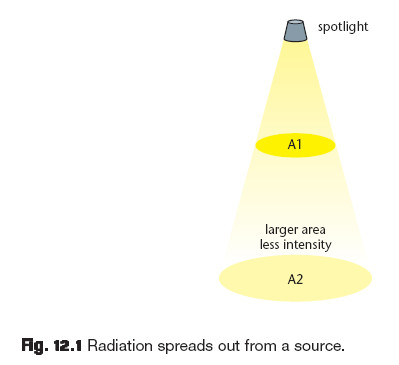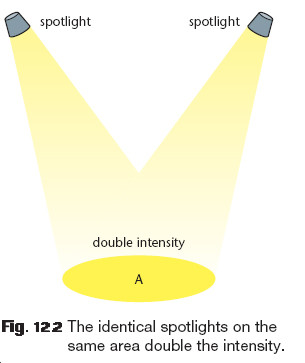Energy of Radiation
The spectrum of electromagnetic radiation ranges continuously from low energy radio waves to very high-energy gamma rays. The electromagnetic radiation comes in packets of energy called photons.
The table lists the types of electromagnetic radiation in order of increasing photon energy.

The boundary between each type of radiation is not a set value. For example, the highest-energy microwave photons merge into the lowest-energy infrared photons.
Electromagnetic radiation delivers energy in ‘packets’ called photons.
The energy arriving at a surface will depend on the number of photons striking the surface and the energy of each photon. For example, a photon of blue light has more energy than a photon of red light, so in Fig. 12.3, if the number of red photons and the number of blue photons striking the area A is the same, then the blue spotlight illuminates the area A in the diagram with more energy than the red one.
Gamma ray photon energies and X-ray photon energies overlap. A gamma ray photon comes from the nucleus of an atom and an X-ray photon does not, but they can have the same energy.

Intensity of Radiation
Electromagnetic radiation carries energy. When a beam of radiation strikes a surface, the intensity of the radiation is the energy arriving on a surface area of one square metre each second.
The intensity of electromagnetic radiation is the energy arriving at the surface each second on a surface area of one square metre.
The radiation is emitted from a source and travels towards a destination. On this journey the radiation spreads out, so the further away a detector is from the source, the less energy is detected. This is shown in Fig. 12.1 The intensity of the radiation can be increased by moving closer to the source.

Area A2 is larger than A1, so the intensity is less. Intensity can also be increased by increasing the power (or total energy) of radiation from the source. One way of doing this is shown in the Fig.12.2.
Some materials absorb some types of electromagnetic radiation. The further the radiation travels through an absorbent material, the lower its intensity will be when it reaches the end of its journey. This is because more of the radiation energy is absorbed by the material. The material gains energy from the incident radiation and heats up.
On some journeys, electromagnetic radiation crosses a boundary between two different materials and is reflected.

